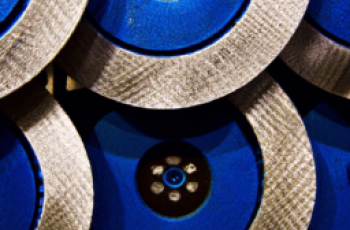When it comes to belt grinders, finding the right coolant and lubricant is essential for optimal performance. Whether you’re a professional or a hobbyist, having the right products can make all the difference in achieving smooth, precise, and efficient grinding. In this article, we will explore the importance of using coolants and lubricants specifically designed for belt grinders and how they can improve your grinding experience. So, let’s dive into the world of coolants and lubricants for belt grinders and discover the key benefits they offer.
Importance of Coolants and Lubricants for Belt Grinders
Belt grinders are incredibly useful machines for grinding, sanding, and polishing various materials. However, their effectiveness and longevity greatly depend on the use of appropriate coolants and lubricants. Coolants and lubricants play crucial roles in enhancing performance and efficiency, preventing overheating and damage, and improving finish and surface quality. By understanding the types of coolants and lubricants available, as well as the factors to consider when selecting them, you can ensure optimal functioning of your belt grinder.
Types of Coolants and Lubricants
There are several types of coolants and lubricants available for belt grinders, each offering distinct advantages and disadvantages. Water-based coolants, oil-based coolants, grease lubricants, and dry lubricants are commonly used in belt grinding applications. It is important to choose the right type based on your specific needs and the materials you are working with.
Selection Factors for Coolants and Lubricants
When selecting coolants and lubricants for your belt grinder, several factors should be taken into consideration. The material being ground plays a significant role in determining the type of coolant or lubricant that is most suitable. Additionally, the specifications of your belt grinding machine, such as its horsepower and speed, should be considered. Grinding conditions, including the intensity and duration of use, also affect the choice of coolant or lubricant. Environmental impact and cost considerations should not be overlooked either.
Advantages and Disadvantages of Water-Based Coolants
Water-based coolants are highly effective in providing cooling and lubrication during belt grinding. They are readily available and cost-effective compared to other types of coolants. However, water-based coolants can potentially cause rust and corrosion, especially if proper maintenance and corrosion inhibitors are not utilized. Regular maintenance is required to ensure optimal performance when using water-based coolants.
Advantages and Disadvantages of Oil-Based Coolants
Oil-based coolants offer superior lubrication, which can result in longer tool life and improved surface finishes. However, they come at a higher cost compared to water-based coolants. Additionally, oil-based coolants may have environmental concerns, especially if they contain harmful additives. Proper disposal methods and adherence to environmental regulations are crucial when using oil-based coolants.
Advantages and Disadvantages of Grease Lubricants
Grease lubricants are widely used in heavy-duty grinding applications, as they provide excellent lubrication and protection against wear. They are particularly suitable for belt grinders that operate under high loads and pressures. However, applying and cleaning grease lubricants can be challenging due to their semi-solid consistency. Moreover, grease lubricants have limited cooling capabilities, which may be a disadvantage in certain grinding conditions.
Advantages and Disadvantages of Dry Lubricants
Dry lubricants offer the advantage of being clean and mess-free. They do not require additional cooling, which can be beneficial in some applications. However, dry lubricants have limited efficiency in terms of lubrication, making them less suitable for high-speed belt grinding. It is important to assess the specific requirements of your grinding operation before considering the use of dry lubricants.
Common Coolant and Lubricant Application Methods
Coolants and lubricants can be applied to belt grinders using various methods. Flood application involves immersing the workpiece and abrasive belt in a substantial amount of coolant or lubricant. Mist application utilizes a fine mist sprayed onto the workpiece and abrasive belt, while drip application involves a controlled drip of coolant or lubricant onto the workpiece. Brush application entails manually applying the coolant or lubricant using a brush. Each method has its own advantages and is suitable for different grinding scenarios.
Maintenance and Safety Considerations
To ensure the continued effectiveness of coolants and lubricants in belt grinding, proper maintenance and safety measures must be implemented. Regular coolant replacement is necessary to maintain optimal performance and prevent the accumulation of contaminants. Proper storage and handling of coolants and lubricants are crucial to prevent degradation and potential health risks. Safety precautions, such as wearing protective gear and avoiding skin contact, should be followed when handling these substances. Lastly, the disposal of used coolants and lubricants must be done in accordance with local regulations to minimize environmental impact.
Best Practices for Coolant and Lubricant Usage
To maximize the benefits of coolants and lubricants in belt grinding, it is important to follow best practices. Manufacturers’ recommendations should be carefully followed regarding the selection, application, and maintenance of coolants and lubricants. Regular monitoring of coolant and lubricant levels is essential to ensure proper functioning of the belt grinder. Additionally, regular cleaning and inspection of grinding equipment help identify and address any potential issues. Finally, operators should receive proper training on the usage of coolants and lubricants to ensure safe and efficient operation of the belt grinder.
In conclusion, coolants and lubricants play a vital role in the performance and efficiency of belt grinders. By understanding the different types of coolants and lubricants available, considering the selection factors, and implementing proper maintenance and safety measures, you can enhance the functionality and longevity of your belt grinding machine. With the right coolant or lubricant and adherence to best practices, you can achieve superior finish and surface quality in your grinding applications.


